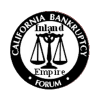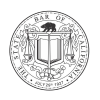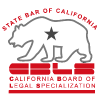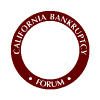Business Bankruptcy

How can businesses file bankruptcy?
When a business is suffering from debt issues, there are many different ways that bankruptcy can help:
CORPORATE BANKRUPTCY
When a business formed as a corporation or LLC, the business itself can file bankruptcy under Chapters 7 or 11.
- Corporate Chapter 7: This will require that the business cease operations and a trustee be appointed to determine whether any assets will be liquidated for the benefit of creditors.
- Corporate Chapter 11: This will allow the business to restructure its debts and continue operating. As of 2020, there is a simplified form of Chapter 11 referred to as “Sub-chapter V” which is available for small businesses.
INDIVIDUAL BANKRUPTCY
- Individual Chapter 7: This will allow someone to discharge their personal debts and business debts. Generally, person filing bankruptcy can decide whether or not they want to continue operating the business.
Additionally, a person who’s debts are primarily business debts is exempt from the Means Test and will not be barred from Chapter 7 due to high income. - Individual Chapter 13: This will allow a person to restructure debts and receive a discharge of any debts that are not paid through the bankruptcy.
- Individual Chapter 11: If a person cannot or does not want to file a Chapter 7 and is also ineligible for a Chapter 13 can file a Chapter 11 which can accomplish many of the things available under the other chapters.
More about Chapter 13...
Here are some of the more common issues that we see in Chapter 13 bankruptcy cases.
ask us a question
The Means / Disposable Income Test
Although the Means Test is primarily a Chapter 7 issue, the same test is used in a Chapter 13 case for determining the minimum plan payment amount. Through careful planning and drafting of your Means Test and Petition, we can ensure that your payment falls within your budget.
Chapter 13 Plan Options
The debtor has complete control of how to structure their Chapter 13 plan, so long as it complies with all relevant provisions of the Bankruptcy Code. For every case, we will put together several different plan options and help you decide which is best for your particular situation.
Modifying a Chapter 13 Plan
At the onset of a Chapter 13 case, your plan will be “confirmed” and the order will lay out exactly what your payments will be for the remaining term of your plan. However, life happens and we can help modify your plan so that your case does not fail. This can involve skipping or reducing payments, increasing or reducing the term of your plan, or other modifications to ensure your succecss.
Objecting to Claims
When a Chapter 13 case is filed, the Court will send out notices to all of the creditors you’ve listed so that they can file claims. We will review those claims to determine if there is a basis to object to them and have them reduced or removed from your plan.
Avoiding Liens on Property
If you have already been sued, your creditors might have already attached judgments against your property. If these liens are not avoided, you might be required to pay them in full. By avoiding liens, they are converted to unsecured debt are not entitled to any minimum payment.
Ending Creditor Harassment
Once you’ve retained our office, we can stop the creditor harassment even before your case is filed. Once your case is pending or after discharge, creditors can face severe penalties for instituting any type of collection activity, including phone calls, past due notices, filing lawsuits, bank account levies, and wage garnishments.
Discharging Taxes
Contrary to what many people believe, it is actually possible to discharge many tax debts. The general rule is that if a tax debt was due more than 3 years ago, then it might be possible to discharge that debt. However, other factors can complicate this and potentially require strategically approaching your case in order to maximizing your discharge.
Keeping Your Property
Chapter 7, also sometimes referred to as “liquidation bankruptcy”, can come with a risk that some of your property could be taken by the trustee and used to pay off a portion of your debts. By maximizing exemptions, pre-bankruptcy planning, and an expertly drafted petition, this risk can be greatly reduced.
Family Law Issues
Bankruptcy often involves family law issues including divorce, divorce debts, child or spousal support, and California community property law. These issues require a wealth of knowledge of how bankruptcy and family law overlap.
Keeping or Surrendering Vehicles
In a Chapter 7 bankruptcy, you have the option keep or surrender a vehicle. For a financed vehicle, your options are reaffirmation, ride-through, surrender, or redemption. For a vehicle that is leased, you can assume or reject the lease.
Student Loan Analysis
While it is true that most student loans are non-dischargeable, some can actually be discharged. There are two situations where this is possible: 1) when repaying the loan would cause an “undue hardship”, or 2) if the student loan does not qualify as a non-dischargeable student loan. Regardless of whether your loans are dischargeable, our attorneys can assist you with understanding what your student loan options are.
Stopping Foreclosure
Either a Chapter 7 or 13 bankruptcy will stop a foreclosure once the case is filed which imposes a stay against your creditors. In a Chapter 7, this might only be temporary, but it can allow you some breathing room to allow you to pursue your options. In a Chapter 13, you can catch up on your mortgage through monthly payments over a period of up to 5 years.
Adversary Proceedings
An adversary proceeding is a separate lawsuit filed in conjunction with a bankruptcy case. There are many types of adversary proceedings that can be filed by creditors, the trustee, the US Trustee, or the debtor.
Non-Dischargeability Actions
The most common type of adversary proceeding is one for a determination of non-dischargeability of a debt. There only limited grounds upon which a debt can be non-discharged, the most common are fraud, marital/divorce/support debts, and willful
Trustee Turnover "Claw Back" Actions
If the trustee wants to have property forcibly turned over to them, they might be required to file an action asking the court to issue such an order.
Objections to Discharge
Unlike an action regarding dischargeability where a creditor is seeking to have a single debt excepted from discharge, an objection to discharge could result in your entire discharge being denied or revoked.
Fraudulent Transfers
A fraudulent transfer is where property is transferred prior to a bankruptcy being filed in a manner suggesting that it may have been done to keep property out of the hands of creditors or the bankruptcy trustee. The look-back period is either 2 or 4 years, depending on the circumstances of the transfer and your financial situation at the time of the transfer.
Preferential Transfers
A preferential transfer or payment is where a creditor is paid prior to a bankruptcy case being filed. Depending on the amount and nature of the debt, the trustee may be able to recover that payment or property from the creditor.
Appeals
Appeals are when a party seeks to have a higher court make a determination of whether the bankruptcy judge’s decision in a case was proper. These cases can make their way up to the district court, bankruptcy appellate panel, circuit court, or United States Supreme Court.

